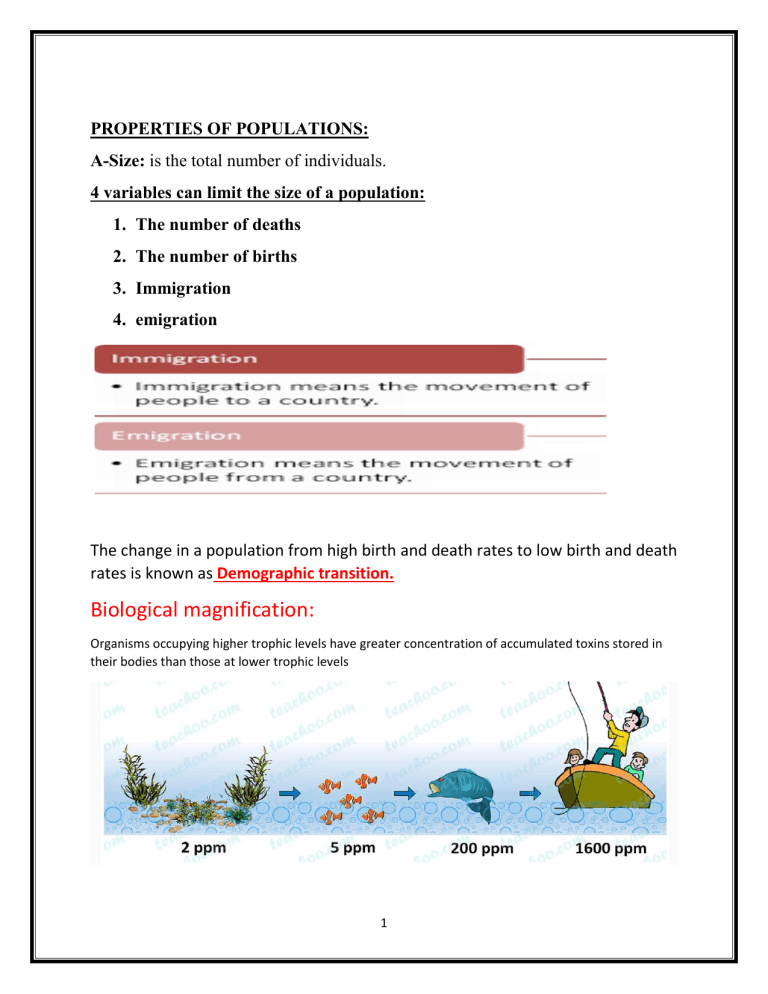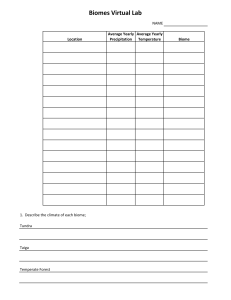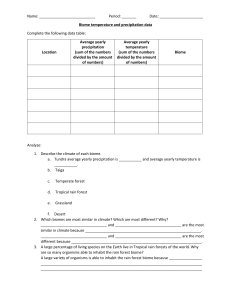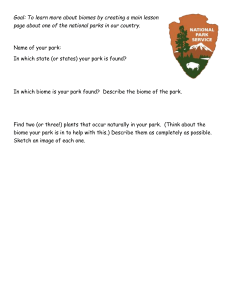
PROPERTIES OF POPULATIONS: A-Size: is the total number of individuals. 4 variables can limit the size of a population: 1. The number of deaths 2. The number of births 3. Immigration 4. emigration The change in a population from high birth and death rates to low birth and death rates is known as Demographic transition. Biological magnification: Organisms occupying higher trophic levels have greater concentration of accumulated toxins stored in their bodies than those at lower trophic levels 1 B- Density: Density is the number of individuals per unit area or volume. C-Dispersion is the pattern of spacing of individuals within the area the population inhabits. D- Age distribution Remember Biotic potential: the maximum rate at which a population could increase under ideal conditions. Limiting factors are those factors that limit population growth. They are divided into two categories: A-Density-dependent factors are those factors that increase directly as the population density increases. They include: 1-competition for food 3-Predation 2- Buildup of wastes. 4-Disease B-Density-independent factors are those factors whose occurrence is unrelated to the population density. They include: 1- Earthquakes 2- Storms. 3- Naturally occurring fires and floods. 2 Types of population growth: Carrying Capacity: A limit to the number of individuals that can occupy one area at a particular time. (K). 3 Biomes Aquatic biome Marine biome: sea , ocean (the largest and most stable biome) Ocean provides most oxygen (highest diversity). Fresh water biome: rivers and streams move in one direction. 4 Terrestrial biomes Biome Tundra (permafrost) Characteristics Organisms Bear , caribou , birds -Located in the far northern parts of north and shrubs America, Europe, and Asia -permanently frozen subsoil found in the farthest point north, including Alaska caribou, polar bears -Though the number of individual organisms in the tundra is high, the number of species is small Taiga -Conifer forest Dominated by conifer (evergreens) forests • Has very cold winters The taiga— the conifer forest– is the largest terrestrial biome. It is also called boreal forest. Tropical rain forest The tropical rain forest has the greatest diversity of animal species of any biome. large mammals including black bear and elk and conifer trees Reptiles insects High precipitations stable temperatures, and high humidity. Covers less than 4 percent of Earth’s land surface but produces 20 percent of Earth’s food.(high productivity) Rapidly decreasing due to human interaction. Deciduous forest Contain trees that shed their leaves during the cold winter months as 5 Squirrel , Bear. maples, oak. Savanna Desert Plentiful grasses, few trees Long dry winter and very wet summer. It is characterized by extreme daily temperature changes. Elephant girrafe cactus,snakes, lizards. Daytime temperature may reach as high as 70C ; heat is lost rapidly at night Chaparral Temperate grassland Dry land. Shrub land ,fires occur. Contain most human food resource. Acid rain Acid rain is caused by pollutants in the air from the combustion of fossil fuels. Nitrogen and sulfur pollutants in the air turn into nitric, nitrous, sulfurous, and sulfuric acids, which cause the pH of the rain to be less than 5.6. This causes the death of the organisms in lakes and damages ancient stone architecture. SO2+H2O H2so4 No2+H2o HNO3 Sulphuric acid Nitric acid 6 EUTROPHICATION 7 8





